In the dynamic world of project management, efficient collaboration and transparent communication are pivotal for success. Navigating through complex tasks and diverse team structures demands a well-defined framework for roles and responsibilities. Enter the RACI matrix, a tool designed to bring clarity and accountability to projects. RACI, an acronym for Responsible, Accountable, Consulted, and Informed, offers a structured approach to delineating each team member's role. In this article, we will delve deeper into the concept of a RACI matrix, using a practical example to demonstrate its application and benefits.
Part 1. Example for RACI Matrix
1. Example Scenario
Imagine a scenario where a company is embarking on the development of a groundbreaking software application. The project encompasses a spectrum of tasks, ranging from requirement gathering and coding to testing and deployment. To ensure seamless execution, a RACI matrix is instrumental in defining and communicating roles across the team. Let's explore how the RACI matrix can be applied to key activities within this hypothetical software development project.

2. Define Requirements
Responsible (R): Business Analyst
Accountable (A): Project Manager
Consulted (C): Development Team
Informed (I): Quality Assurance Team
At the onset, the Business Analyst takes the reins as the responsible party for gathering and documenting requirements. Meanwhile, the Project Manager is held accountable for the success of this phase. To ensure a holistic approach, the Development Team is consulted for technical insights, while the Quality Assurance Team is kept informed to prepare for forthcoming testing activities.
3. Coding
Responsible (R): Development Team
Accountable (A): Lead Developer
Consulted (C): Quality Assurance Team
Informed (I): Project Manager
As the project transitions to the coding phase, the Development Team assumes responsibility for the intricate process of translating requirements into functional code. The Lead Developer is accountable for overseeing the coding activities, ensuring alignment with project goals. Recognizing the importance of collaboration, the Quality Assurance Team is consulted for their input on potential challenges, while the Project Manager remains informed about the progress, ensuring alignment with overarching project objectives.
4. Testing
Responsible (R): Quality Assurance Team
Accountable (A): Project Manager
Consulted (C): Development Team
Informed (I): Stakeholders
Testing, a critical phase in software development, requires a meticulous approach. The Quality Assurance Team takes the helm as the responsible party for rigorously testing the software. Simultaneously, the Project Manager maintains accountability for the overall success of the testing phase. The Development Team is consulted for clarifications and technical insights, fostering a collaborative atmosphere. Stakeholders are kept informed of testing progress, ensuring transparency and managing expectations.
5. Deployment
Responsible (R): DevOps Team
Accountable (A): Project Manager
Consulted (C): Development Team
Informed (I): Stakeholders
In the final leg of the project, the deployment phase, the DevOps Team assumes responsibility for orchestrating the seamless deployment of the software. The Project Manager, as the accountable party, oversees the deployment process to ensure alignment with project objectives. Recognizing the interconnectedness of roles, the Development Team is consulted for their technical expertise in navigating potential challenges. Stakeholders are kept informed of the deployment schedule, fostering transparency and managing expectations throughout the organization.
Part 2. Boardmix Template for RACI Matrix
Boardmix is a powerful tool designed to streamline your project management process. The in-built RACI matrix template allows you to clearly define and visualize the roles and responsibilities of each team member, ensuring that everyone knows exactly what they are supposed to do. RACI stands for Responsible, Accountable, Consulted, and Informed - these categories form the backbone of this matrix. With our easy-to-use interface, you can quickly assign tasks and track progress in real time. Whether you're managing a small team or coordinating a large project, our RACI Matrix template can help you stay organized and efficient.
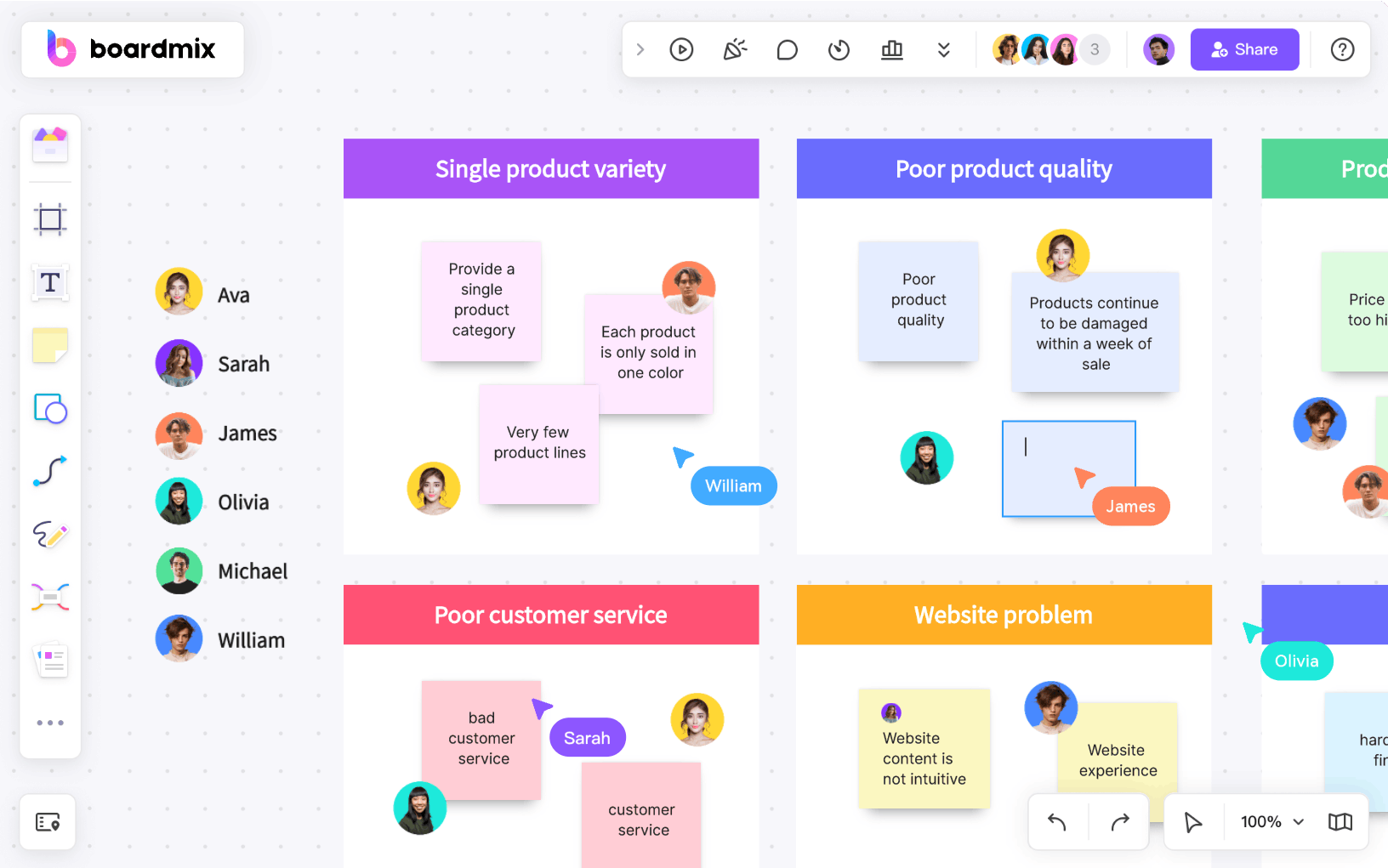
How to Create a RACI Chart with Boardmix:
1. Open Boardmix and select 'New Board' from the dashboard.

2. Choose the 'RACI Matrix' template from our extensive library of templates.
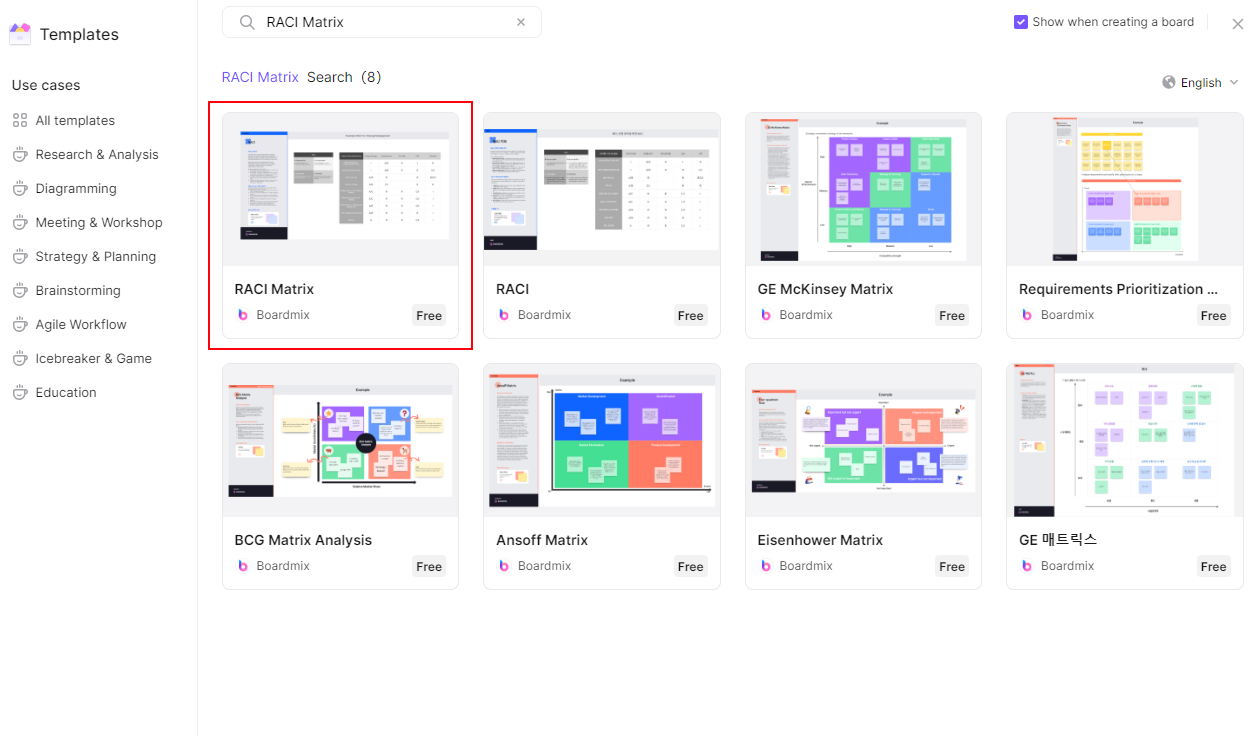
3. Once the template is loaded, start by listing your project tasks on the left-hand column and team members across the top row.
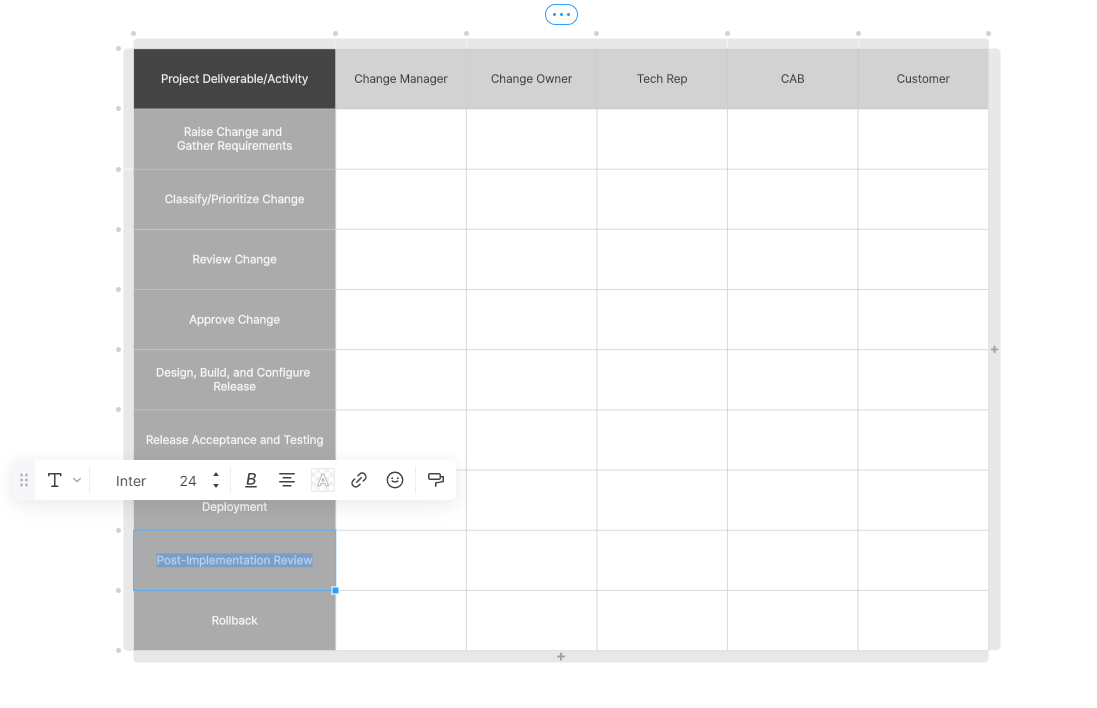
4. For each task, assign roles to team members using the RACI model: Responsible, Accountable, Consulted, Informed.
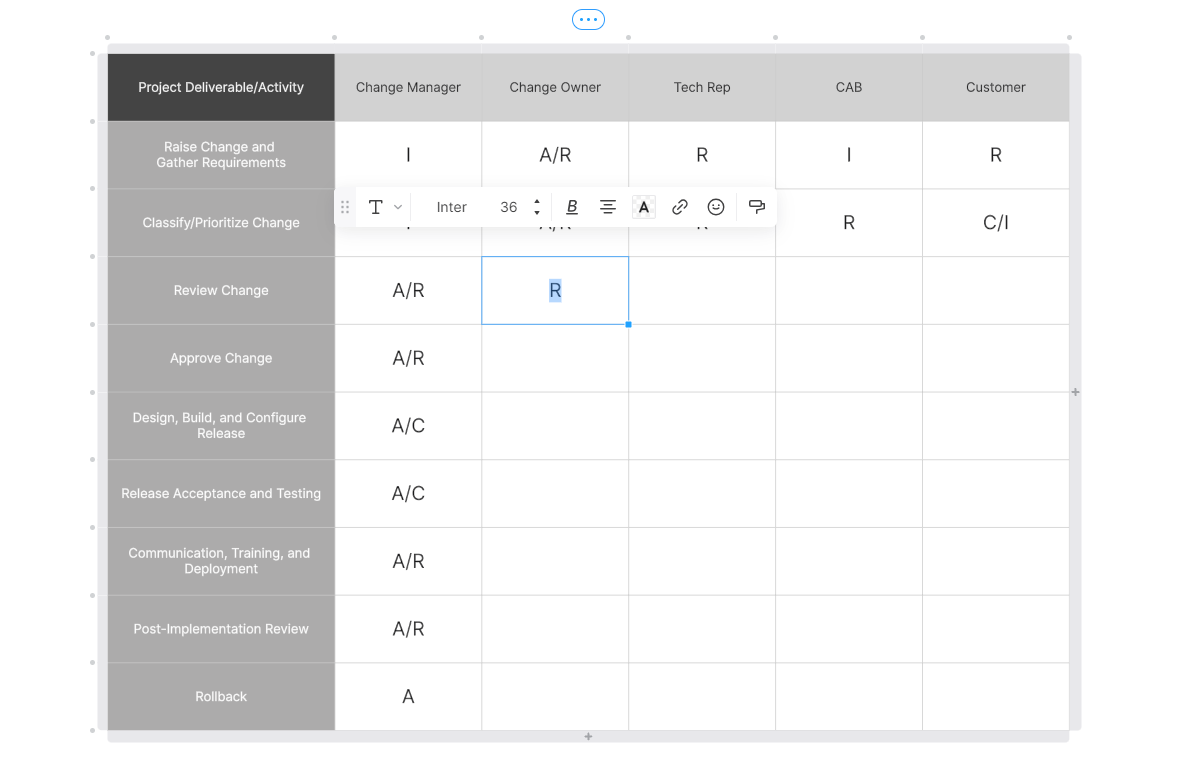
5. Use different colors or symbols to represent each role for easy visualization.
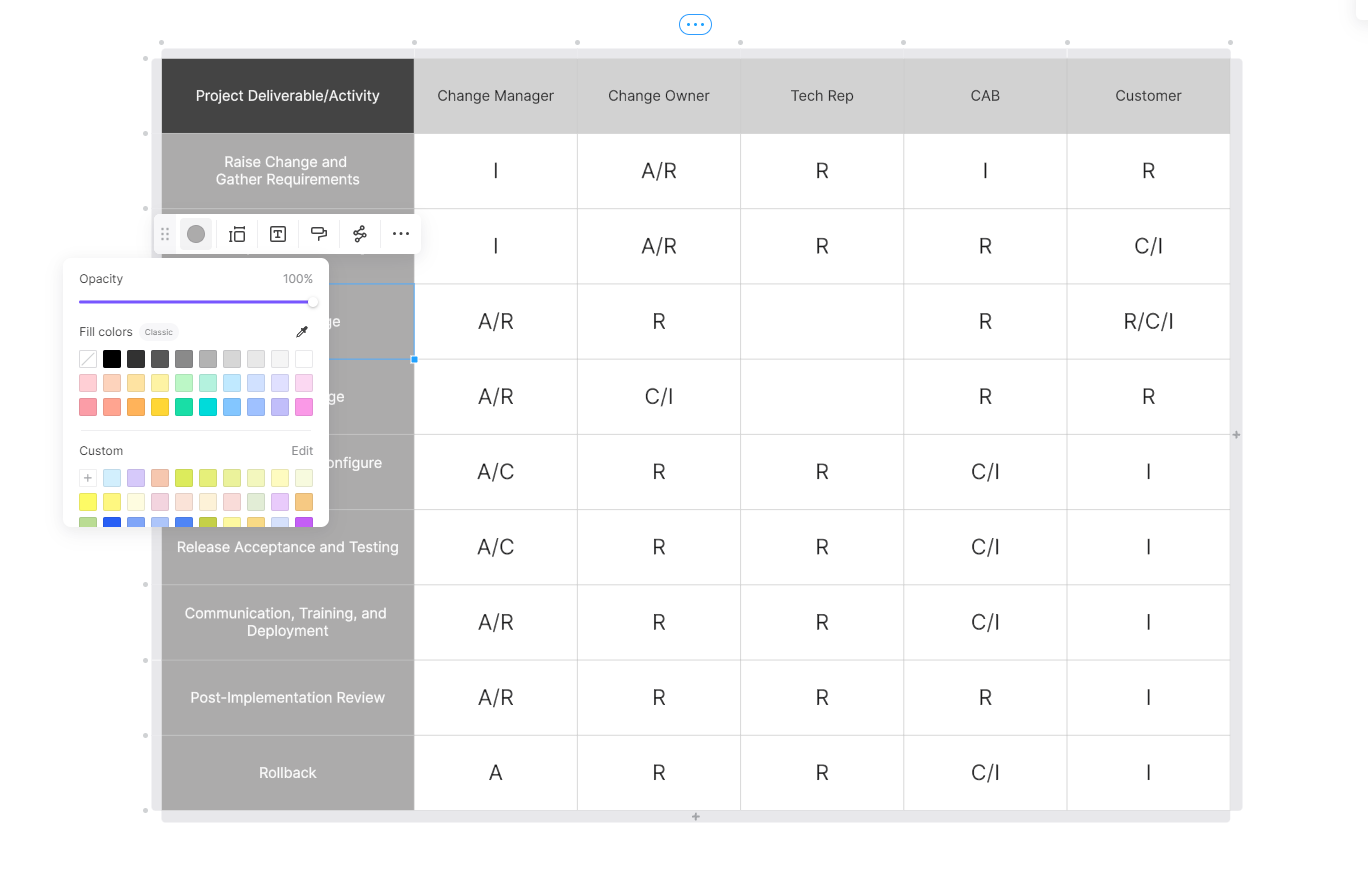
6. Once you've filled out your matrix, you can easily share it with your team through Boardmix's collaboration features.

Part 3. Benefits of Implementing a RACI Matrix
Clarity and Transparency:
One of the primary benefits of a RACI matrix is its ability to provide clarity regarding roles and responsibilities. By clearly defining who is responsible, accountable, consulted, and informed for each task, team members can easily understand their roles, minimizing confusion and fostering a more transparent working environment.
Improved Communication:
The RACI matrix acts as a visual communication tool, ensuring that team members are aware of their roles and how they fit into the larger project. This improved communication helps prevent misunderstandings and promotes a more efficient workflow.
Accountability and Ownership:
Assigning specific roles and responsibilities through the RACI matrix enhances accountability within the team. Team members know exactly what is expected of them, fostering a sense of ownership and commitment to the success of their designated tasks.
Risk Mitigation:
With a RACI matrix in place, potential risks and bottlenecks can be identified early in the project lifecycle. By ensuring that all relevant stakeholders are consulted and informed, the matrix acts as a risk mitigation tool, allowing teams to address issues proactively.
Efficient Resource Utilization:
By clearly outlining who needs to be consulted and informed, the RACI matrix prevents unnecessary duplication of efforts. It ensures that resources are utilized efficiently, with each team member contributing their expertise where it is most needed.
Enhanced Collaboration:
The collaborative nature of the RACI matrix promotes cross-functional teamwork. Different departments and teams can understand their interdependencies, fostering a collaborative atmosphere that is essential for successful project completion.
Conclusion
The RACI matrix proves to be an invaluable asset in the complex landscape of project management. Through our exploration of a practical example in the software development realm, we've seen how this tool can bring structure, clarity, and accountability to multifaceted projects. The benefits of implementing a RACI matrix extend beyond the initial planning phase, influencing communication, collaboration, and overall project success. As organizations continue to navigate intricate projects, the RACI matrix stands as a reliable guide, ensuring that everyone involved is on the same page and working cohesively towards common objectives.
Boardmix is the ideal platform for creating your RACI matrix, offering an intuitive interface and a comprehensive suite of tools to streamline your project management process. Our RACI Matrix template allows you to easily assign roles, responsibilities, and tasks, ensuring clarity and efficiency in team coordination. With real-time tracking features, Boardmix enables you to monitor progress seamlessly, making it the perfect tool for both small teams and large-scale projects.








